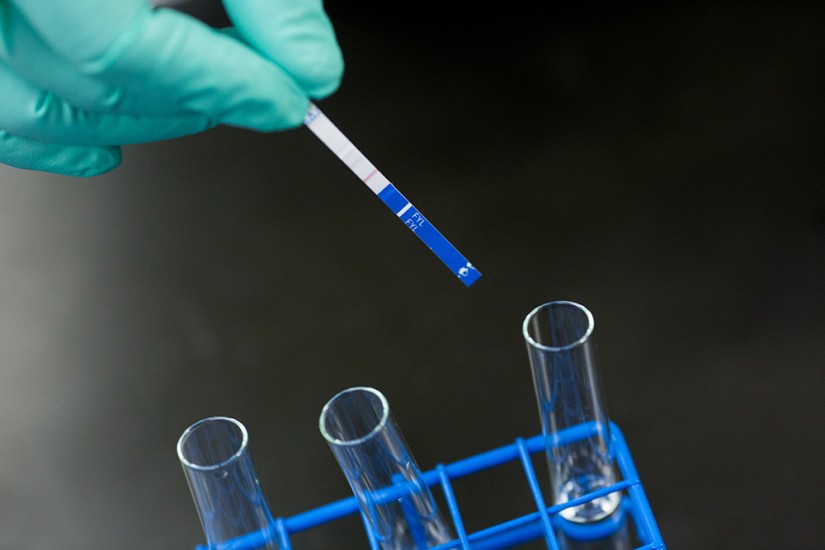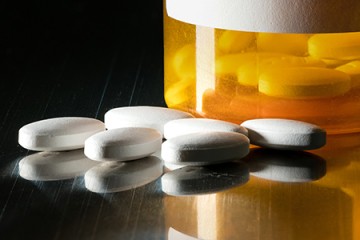Fentanyl is one of the most potent opioids and is often laced into street drugs, which increases the risk of overdosing.
A study to assess the feasibility of checking illicit street drugs for fentanyl found that low-cost test strips detect the presence of fentanyl with a high degree of accuracy, and that the vast majority of people who use street drugs are interested in using drug checking to help prevent overdoses. The initial findings indicate that drug checking presents an opportunity for a public health approach to the fentanyl overdose crisis.
In 2016, overdoses claimed more than 64,000 lives in the U.S., and all indications are that the 2017 numbers will be even greater. Fentanyl, a synthetic opioid that is 50 to 100 times more potent than morphine, is the primary cause of the rapid increase in overdose deaths and is responsible for approximately 20,000 of the 2016 overdose deaths. Fentanyl and its associated analogues have been found mixed with heroin and cocaine, and pressed into counterfeit prescription drugs.
"We are at a pivotal moment in the overdose epidemic, and we need to embrace the full range of interventions that can save lives," says Susan Sherman, a professor in the Department of Health, Behavior, and Society at the Johns Hopkins Bloomberg School of Public Health and a co-author of the study. "Our findings bring to the table evidence that can inform a public health approach to the fentanyl crisis. Smart strategies that reduce harm can save lives."
Known as the FORECAST study, the research was conducted in three phases by researchers at the Bloomberg School and Rhode Island Hospital/Brown University, with support from the Bloomberg American Health Initiative.

Image caption: "The strips are appealing because they are so low threshold and have the highest sensitivity, specificity, and level of detection," says study co-author Susan Sherman.
Image credit: Johns Hopkins Bloomberg School of Public Health
The first phase assessed the ability of three drug-checking technologies to detect the presence of fentanyl in street drug samples. In addition to the strip tests, the study compared the accuracy of two testing technologies—a TruNarc machine and a Bruker Alpha machine—with what is considered the gold standard for this type of drug testing: a gas chromatograph/mass spectrometer.
For each technology, researchers determined three markers of fentanyl detection: sensitivity, which is the ability to detect fentanyl when it is present; specificity, which is the ability to detect when fentanyl is not present; and the detection limit, which is the lowest concentration of the drug that can be detected.
The test strips had the lowest detection limit and the highest rates of sensitivity and specificity. TruNarc had high rates of specificity, but low rates of sensitivity. The Bruker Alpha had high rates of both sensitivity and specificity, but lower than the test strips.
"The strips are appealing because they are so low threshold and have the highest sensitivity, specificity, and level of detection," Sherman says. "However, I wouldn't rule out the Bruker, even though it is costlier. It would work best in a fixed site with a trained person to operate it."
In the study's second phase, researchers conducted anonymous surveys with 335 people who use drugs in Baltimore; Providence, Rhode Island; and Boston. The survey found that 84 percent of respondents were concerned that the drugs they use contain fentanyl, and only about one in four stated a preference for drugs with fentanyl. Drug checking was viewed as an important means of overdose prevention, with 89 percent agreeing that it would make them feel better about protecting themselves from overdose. Importantly, 70 percent of respondents reported that knowing that their drugs contained fentanyl would lead them to modify their behavior. This could include not using the drugs, using the drugs more slowly, using the drugs with others who have naloxone, or changing their purchasing behaviors.
The study's third phase consisted of interviews with 32 key informants from organizations that work with people who use drugs to explore their interest in implementing drug-checking services in their organization and potential barriers to doing so. Informants overwhelmingly support the concept of drug checking in order to provide people who use drugs with more information to keep themselves safe, and to provide another potential point of engagement to help those people access services. However, they also had questions related to the logistics and legality of implementing a drug-checking program.
The research results will be presented for discussion at a meeting with scientists and practitioners at the Bloomberg School on Wednesday at 10 a.m.; the presentation will be available via webcast.
Posted in Health
Tagged opioids, drug abuse, drug testing, bloomberg american health initiative











